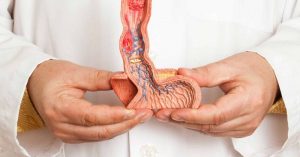This disease is the development of fibrous scar tissue inside the penis which is causing curved and painful erections. It is known that penis vary in shape and size and if you have a curved erection, then it is not necessarily a cause for concern. But when someone has Peyronie’s disease, then this cause a significant pain or bends in some men. This can make you to have difficulties to get or maintain an erection (condition known as erectile dysfunction) or it will prevent from having sex. This disease is causing anxiety and stress for many men. In some cases, Peyronie’s disease goes away on its own. But in the most cases, Peyronie’s disease will worsen or remain stable. If the curvature is severe enough to prevent successful sexual intercourse, then treatment might be needed. [1]
Peyronie’s disease symptoms and risk factors
Contents
Symptoms: The signs and symptoms of Peyronie’s disease might appear suddenly or they can develop gradually. Here are the most common signs and symptoms of Peyronie’s disease:
- Pain: People affected by Peyronie’s disease can have penile pain with or without an erection. [1]
- Shortening of the penis: As a result of Peyronie’s disease, your penis might become shorter. [2]
- Erection problems: This disease can cause problems of getting or maintaining an erection (this condition is known as erectile dysfunction). [2]
- A significant bend to the penis: Penis can bend to one side, curve downward or upward. There are some cases when the erect penis might have narrowing, an hourglass appearance or indentations, with a tight and narrow band around the shaft.
- Scar tissue: The plaque (known as scar tissue) that is associated with Peyronie’s disease can be felt under the skin of the penis as flat lumps or a band of hard tissue.
The curvature which is associated with Peyronie’s disease can gradually worsen but at some point, it typically stabilizes. The pain during the erections usually improves in a period of 1 – 2 years but the curvature and scar tissue often remain. There are some cases when the both pain and curvature which are associated with the Peyronie’s disease are improving without treatment [3]. If the curvature or pain of your penis prevents you from having sex or it causes you anxiety, then you should visit your doctor as soon as possible.
Peyronie’s disease symptoms and Causes
Causes: The cause for this disease is not completely understood but there are many factors which are taking part of it. This disease generally results from repeated injury to the penis. The penis can be damaged as a result of an accident, athletic activity or during the sex. But in the most cases, no specific trauma to the penis is recalled. When the healing is in process then the scar tissue is forming in a disorganized manner which can lead to nodule that you can feel or in development of curvature. Each side of penis has corpus cavernosum (a sponge – like tube) and it has many tiny blood vessels. The each side of the sponge – like tube is encased in a sheath of elastic tissue which is called albuginea and this tissue stretches during an erection. When someone has Peyronie’s disease, then the penis become erect and the region with the scar tissue does not stretch and the penis becomes disfigured or bends and possibly painful. There are some males who have Peyronie’s disease which have come gradually and it does not seem that is related to injury. Doctors are trying to discover if the Peyronie’s disease is linked to certain health conditions or an inherited trait.
Risk factors: It is known that minor injuries to the penis are not always leading to Peyronie’s disease. There are many factors which could lead to wound healing and scar tissue buildup and they can play a role in the Peyronie’s disease. These factors are:
- Connective tissue disorders: Those males who have a connective tissue disorder are having an increased risk of developing Peyronie’s disease.
- Age: The chance of having Peyronie’s disease is increasing with the age, particularly in men who are older than 55. [4]
- Heredity: It is known that if your father or brother has Peyronie’s disease, then you have increased chances of getting it. [5]
References:
[1] Jalkut M, Gonzalez-Cadavid N, Rajfer J. Peyronie’s disease: A review. Reviews in Urology. 2003;5(3):142–8.
[2] Randhawa K, Shukla CJ. Non-invasive treatment in the management of Peyronie’s disease. Therapeutic Advances in Urology. 2019;11.
[3] Smith JF, Walsh TJ, Lue TF. Peyronie’s disease: a critical appraisal of current diagnosis and treatment. International Journal of Impotence Research. 2008;20:445-59.
[4] Shamloul R, Bella AJ. Management of Peyronie’s disease in the aging male. Medscape: Aging Health. 2011;7(1):65-78.
[5] Herati AS, Pastuszak AW. The genetic basis of Peyronie’s disease: A review. Sexual Medicine Reviews. 2016;4(1):85–94.





